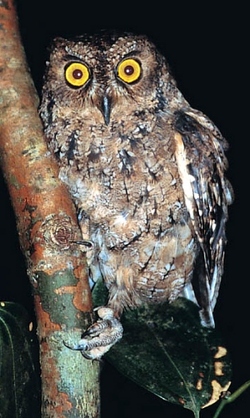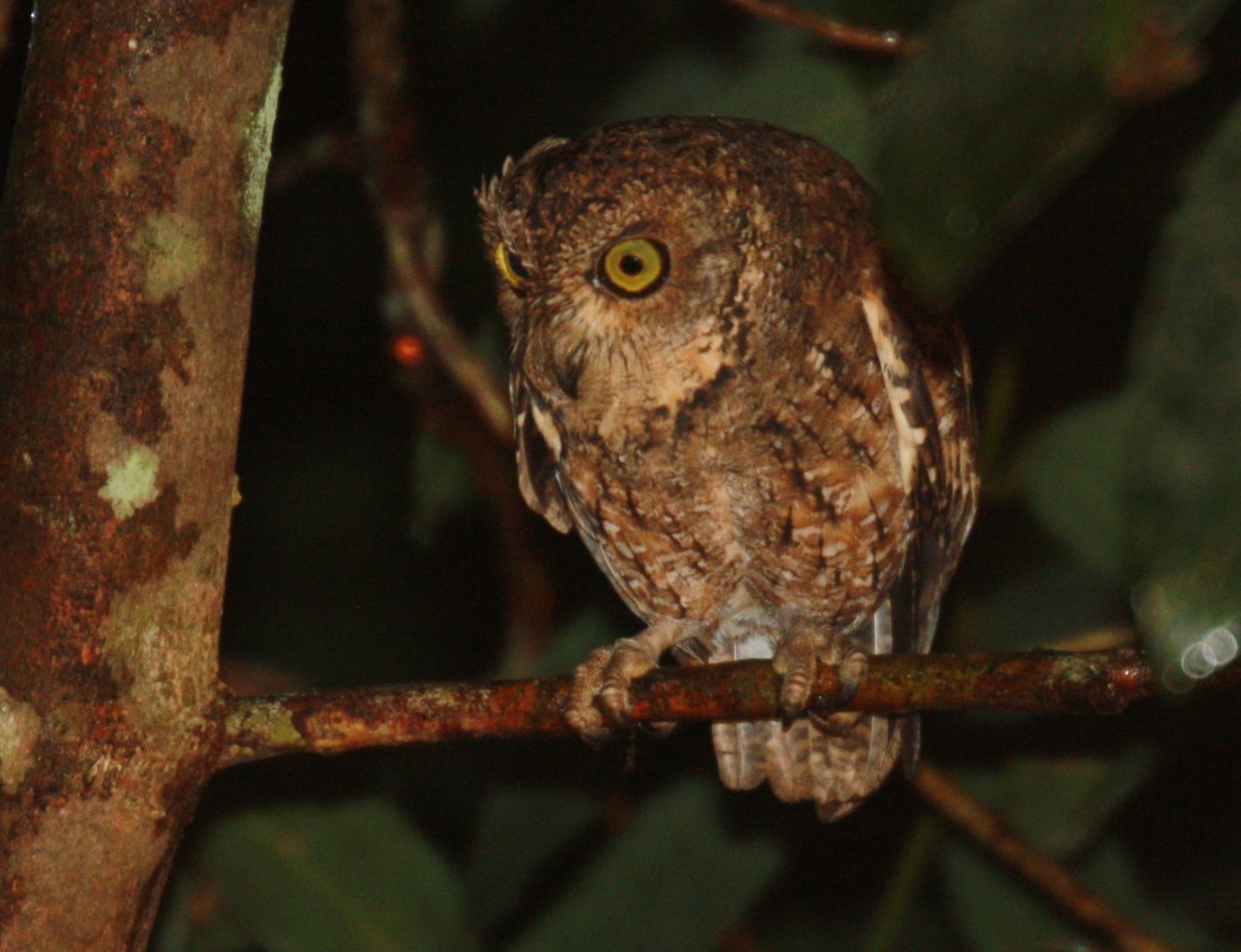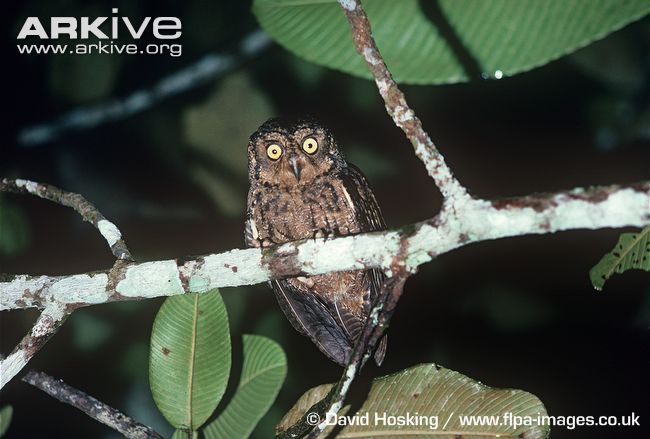
Otus insularis
SUBFAMILY
Striginae, Tribe Otini
TAXONOMY
Gymnoscops insularis Tristam, 1880, Mahй Island, Seychelles.
Monotypic.
OTHER COMMON NAMES
English: Bare-legged scops-owl; French: Petit-duc scieur; German:
Seychelleneule; Spanish: Autillo de Seychelles.
PHYSICAL CHARACTERISTICS
7.9 in (20 cm). Weights not given. Overall color is yellowish
brown or rufous. Head features minute ear tufts and the legs
are bare.
DISTRIBUTION
Mahй Island in Seychelles
HABITAT
Secondary forest on upper slopes and in valleys at elevations of
820–1,969 ft (250–600 m), usually close to water.
BEHAVIOR
Strictly nocturnal. Very little else is known.
FEEDING ECOLOGY AND DIET
Insects, tree frogs, and lizards.
REPRODUCTIVE BIOLOGY
Almost nothing known, but this owl is suspected of nesting in
crevices and cavities in rocks on the ground. It may lay only
one egg.
CONSERVATION STATUS
Critically Endangered. The extremely small population (estimated
at 180–360 as of 2000) remains threatened by habitat
destruction for housing development and forest clearance for
agriculture and by introduced predators (e.g., rats, cats, etc.).
Morne Seychellois National Park encompasses much of the
highland forest where this species occurs.
SIGNIFICANCE TO HUMANS
None known.
Other popular Animals
Photo Gallery of - Seychelles scops-owl




 Animalia Life
Animalia Life